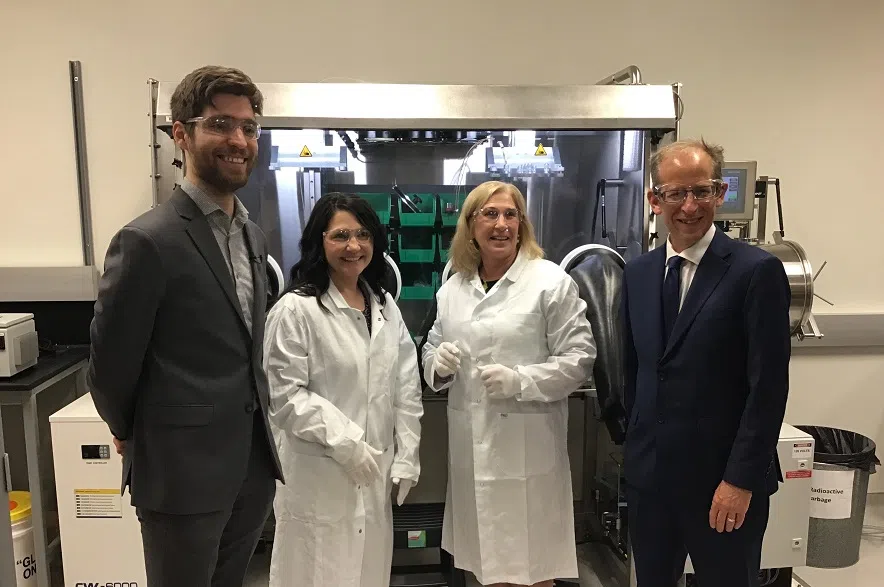Nuclear research in Saskatchewan got a funding boost Monday, with more than $580,000 going to University of Regina.
The money is coming from Innovation Saskatchewan’s Innovation and Science Fund which matches federal innovation funding dollars to Saskatchewan post-secondary institutions for projects, and will support projects in nuclear energy, in subatomic physics and in high performance computing in nuclear science.
Minister of Advanced Education Colleen Young made the funding announcement at the University of Regina on Monday morning. Young said the funding is important, as the province moves forward with Small Nuclear Reactors (SMRs) and other new technologies.
“It’s important to ensure that we support the research and development of those technologies as we move forward,” said Young.
SMRs are small nuclear reactors that produce around 300 megawatts of clean electricity, which is enough to power about 300,000 homes.
Read more
- SaskPower pushes forward with nuclear energy developments
- SaskPower SMR deal opens path for potential nuclear energy use in province
The Small Modular Reactors Fuel Corrosion Laboratory led by Dr. Arthur Situm will get $200,000 to study ways of preventing rust and damage in materials used to protect fuel in SMRs and provide advanced training opportunities in SMR technology.
The Nuclear Medium project led by Dr. Gojko Vuljanic will receive $83,109 to upgrade simulation lab equipment for studying nuclear matter under extreme conditions.
Vuljanic said his project requires “supercomputing equipment in order to be able to do simulations, very detailed simulations of that matter, because when we recreate it in a lab it only exists for a fraction of a section.”
In addition to being able to simulate that matter, they will also be able to do research into supercomputing itself, he added.
Finally, $300,000 is going towards a Solenoidal Large Intensity Device Heavy Gas Cherenkov Detector (HGC) project led by physics professor Dr. Garth Huber.
The funds will help construct and test components of the HGC, a critical piece of SoLID, one of the world’s most powerful microscopes.
The SoLID project is a collaboration of 300 members from more than 70 institutions in 13 countries, and the HGC detector is a significant part of Canada’s contribution to advancing physics globally.
“We’re going to be using new technology devices that haven’t been combined before in order to build a brand new detector with completely new capabilities, which will allow us to get a more detailed picture inside the proton than we have now, ” Huber said
Young said Saskatchewan’s universities have outstanding professors and teachers in fields of science and research, and pointed to the importance of having that expertise here at home.
“I think it’s really noticeable that we do have those science and research people right here at our university who are able to do the research … to ensure that the technologies that are important as we move forward are here, and to train our next generation of people who will secure our growth in this province.”
U of R president Jeff Keshen said the funding was an “affirmation of the great work our researchers are doing.” He described the university’s physics department as one that punches “well above” its weight.
“Our researchers drive innovation, our researchers attract students, our researchers establish the prominence of the institution,” said Keshen.
He also cited the importance of attracting and retaining scientists and researchers as the province prepares for future development of SMRs. Estevan has been tagged as the first site of an SMR in the province, though a final decision is still years away.
“It is extraordinarily important that we’re attracting first rate scholars that are going to bring those students, to train our workforce to serve this province… to become a leader in SMR,” said Keshen.











